
The San Diego Zoo Safari Park, originally named the San Diego Wild Animal Park until 2010, is an 1,800 acre zoo in the San Pasqual Valley area of San Diego, California, near Escondido. It is one of the largest tourist attractions in San Diego County. The park houses a large array of wild and endangered animals including species from the continents of Africa, Asia, Europe, North and South America, and Australia. This includes the largest collection of hoofed mammals in the world. The park is in a semi-arid environment, and one of its most notable features is the Africa Tram, which explores the expansive African exhibits. These free-range enclosures house such animals as antelopes, giraffes, buffalo, cranes, and rhinoceros. The park is also noted for its California condor breeding program.
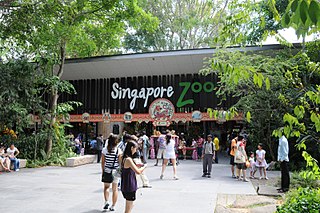
The Singapore Zoo, formerly known as the Singapore Zoological Gardens or Mandai Zoo, is a 28 hectares zoo located on the margins of Upper Seletar Reservoir within Singapore's heavily forested central catchment area. Opened in 1973, the zoo was built at a cost of $9 million that was granted by the government of Singapore.

Dudley Zoological Gardens is a 40-acre (16 ha) zoo located within the grounds of Dudley Castle in the town of Dudley, in the Black Country region of the West Midlands, England. The Zoo opened to the public on 18 May 1937. It contains 12 modernist animal enclosures and other buildings designed by the architect Berthold Lubetkin and the Tecton Group. The zoo went into receivership in 1977 and was purchased by Dudley Metropolitan Borough Council. Dudley Zoo is now operated by Dudley and West Midlands Zoological Society, founded in 1978 and a registered charity.

The Detroit Zoo is a zoo located in the cities of Huntington Woods and Royal Oak in the U.S. state of Michigan. Spanning 125 acres (50.6 ha), it houses more than 2,000 animals and more than 245 different species. It was the first U.S. zoo to feature bar-less habitats, and is regarded to be an international leader in animal welfare, conservation and sustainability by the Detroit Zoological Society.

Chester Zoo is a zoo at Upton-by-Chester, Cheshire, England. Chester Zoo was opened in 1931 by George Mottershead and his family. It is one of the UK's largest zoos at 51 hectares. The zoo has a total land holding of approximately 160 hectares.

The Night Safari, Singapore is the world's first nocturnal zoo located in Mandai, Singapore. One of the most popular tourist attractions in the country, it forms part of the Mandai Wildlife Reserve along with the River Wonders, Singapore Zoo and Bird Paradise.

Jurong Bird Park was formerly an aviary and tourist attraction in Jurong, Singapore between 1971 and 2023. The largest such bird park in Asia, it covers an area of 0.2 square kilometres on the western slope of Jurong Hill, the highest point in the Jurong region. It was one of the parks managed by Mandai Wildlife Reserve, which are also the managers of Singapore Zoo, Night Safari and River Wonders.
The following lists events that happened during 1990 in Singapore.
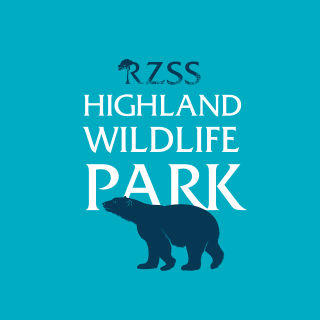
The Highland Wildlife Park is a 105-hectare (260-acre) safari park and zoo near Kingussie, Highland, Scotland. The park is located within the Cairngorms National Park. The park is run by the Royal Zoological Society of Scotland and is a member of the British and Irish Association of Zoos and Aquariums (BIAZA) and the European Association of Zoos and Aquaria (EAZA).

Ah Meng was a female Sumatran orangutan and a tourism icon of Singapore. Ah Meng was originally from Indonesia and was kept illegally in Singapore as a domestic pet before being recovered by a veterinarian in 1971. She was then eleven years old and was given a home at the Singapore Zoo.

Woburn Safari Park is a safari park located in Woburn, Bedfordshire, England. Visitors to the park can drive through exhibits, which contain species such as southern white rhino, elephants, tigers and black bears. It is part of the estates of the Duke of Bedford that also includes Woburn Abbey and its 3,000-acre (1,200 ha) deer park. The Safari Park itself covers 360 acres (150 ha).
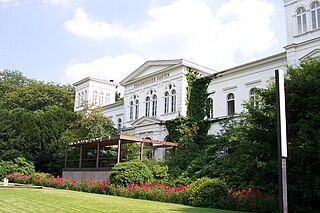
Wuppertal Zoo is a 24-hectare (59-acre) zoo in Wuppertal, Germany. About 5,000 animals from around the world live at the zoo, representing about 500 species, including apes, monkeys, bears, big cats, elephants, as well as birds, reptiles, and fish.
The Kansas City Zoo & Aquarium is a 202-acre (82 ha) zoo founded in 1909. It is located in Swope Park at 6800 Zoo Drive Kansas City, Missouri, in the United States. The zoo has a Friends of the Zoo program. It is home to more than 10,000 animals and is an accredited member of the Association of Zoos and Aquariums (AZA).
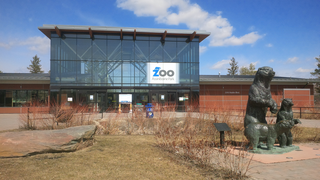
Assiniboine Park Zoo is an 80-acre (32 ha) zoo at the west end of Assiniboine Park in Winnipeg, Manitoba, Canada. It has been best known for decades for its polar bear exhibit, of which the old enclosure was replaced in 2013 with Journey to Churchill.

Kolmården Wildlife Park is a zoo that opened in 1965 overlooking Bråviken bay in Sweden. It is the largest zoo in Scandinavia, includes the first dolphinarium in Scandinavia, which opened in 1969 and has daily shows, and the world's first cable car safari. The wildlife park also has a birds of prey display and a seal show. In the Marine World area is a roller coaster called "The Dolphin Express". Another, larger, roller coaster in the park is Wildfire.

Knut was an orphaned polar bear born in captivity at the Berlin Zoological Garden. Rejected by his mother at birth, he was raised by zookeepers. He was the first polar bear cub to survive past infancy at the Berlin Zoo in more than 30 years. At one time the subject of international controversy, he became a tourist attraction and commercial success. After the German tabloid newspaper Bild ran a quote from an animal rights activist that decried keeping the cub in captivity, fans worldwide rallied in support of his being hand-raised by humans. Children protested outside the zoo, and e-mails and letters expressing sympathy for the cub's life were sent from around the world.


The Yorkshire Wildlife Park is a wildlife conservation and rehabilition centre and tourist attraction located in Branton, south-east of Doncaster, South Yorkshire, England. It opened in 2009 on the site of Brockholes Farm, a former riding school and petting zoo, and features 500 animals of 100 species. Yorkshire Wildlife Park is an official member of the British and Irish Association of Zoos and Aquariums (BIAZA) and the European Association of Zoos and Aquaria (EAZA).
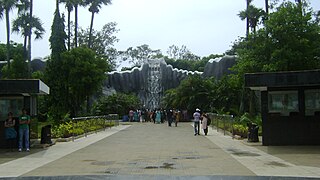
Arignar Anna Zoological Park, also known as the Vandalur Zoo, is a zoological garden located in Vandalur, is in the southwestern part of Chennai, Tamil Nadu, about 31 kilometres (19 mi) from the Chennai Central and 15 kilometres (9.3 mi) from Chennai Airport. Established in 1855, it is the first public zoo in India. It is affiliated with the Central Zoo Authority of India. Spread over an area of 602 hectares, including a 92.45-hectare (228.4-acre) rescue and rehabilitation centre, the park is the largest zoological park in India. The zoo houses 2,553 species of flora and fauna across 1,265 acres (512 ha). As of 2012 the park houses around 1,500 wild species, including 46 endangered species, in its 160 enclosures. As of 2010, there were about 47 species of mammals, 63 species of birds, 31 species of reptiles, 5 species of amphibians, 28 species of fishes, and 10 species of insects in the park. The park, with an objective to be a repository of the state's fauna, is credited with being the second wildlife sanctuary in Tamil Nadu after Mudumalai National Park.

Zoo Osnabrück is located in south Osnabrück at the hillside of Schölerberg in Osnabrück, Germany. It was founded under the name "Heimattiergarten", and opened during the summer of 1936. Almost 3000 animals from roughly 300 species can be seen on the 23.5 ha (0.235 km2) land. It is famous for housing the Grolar Bear. This brought about many scientific inquiries into the zoo.



















